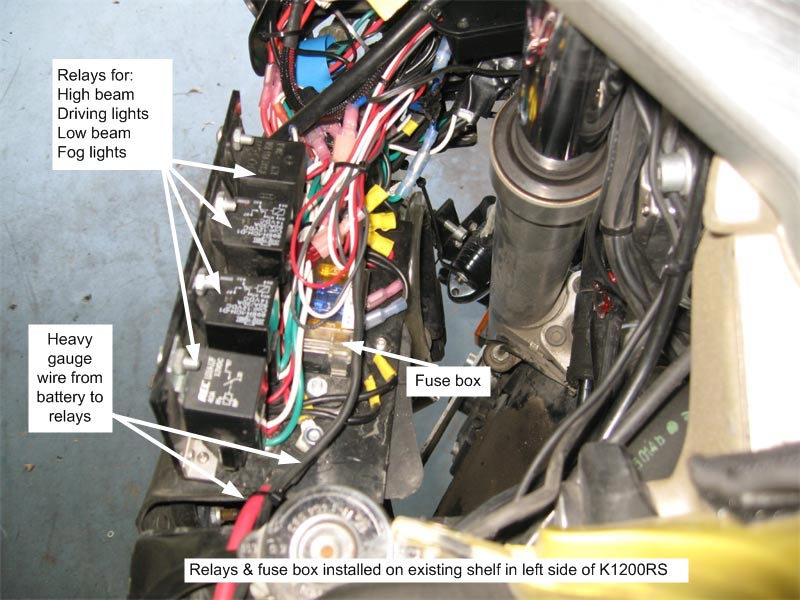
Make your headlight brighter
|
When riding at night, I never seem to have enough light on the road. In search for a reasonable cost solution, I remembered reading that even a small voltage drop to your headlight will cause a significant loss of light output. Here is a table from Daniel Stern Lighting (http://www.danielsternlighting.com/tech/relays/relays.html) that shows the problem:
In
many cases, the thin factory wires are inadequate even for the stock
headlamp equipment. Headlamp bulb light output is severely compromised
with decreased voltage. The drop in light output is not linear, it is
exponential with the power 3.4. For example, let's consider a 9006 low
beam bulb rated 1000 lumens at 12.8 Volts and plug in different
voltages: On my K1200RS (1998), I measured a 0.5 volt drop from the ground pin on the low beam bulb to the negative battery terminal, and also a 0.5 volt drop from the +12 side to the positive on the battery terminal. For some reason BMW runs very thin wire to the headlight. I then installed a 12 gauge wire in parallel with the brown ground wire on the headlight directly back to the negative terminal on the battery. I soldered the bulb end directly to the brown ground wire on the headlight bulb socket. I turned on the ignition, started the engine and measured the voltage drop with the wire connected. The reading was 0.025 volts. According to the above table, the headlight brightness should increase by about 10% with this modification, so I examined the low & high beam brightness with the extra wire attached compared to not attached. The headlight got noticeably brighter when I connected the wire, as expected. Installing heavier wire to the + side of the headlight is quite a bit more involved, as you would need to run it from the bulb to the headlight switch, then from the switch to the headlight fuse. A much better solution to this side of the bulb is to use a relay. The high or low beam relay is controlled by the wire that normally goes to the bulb (high or low beam). Connect the high power input side of the relay to a fuse and then to the battery through a heavy gauge wire. Connect the high power output side of the relay to the headlight socket, again through a heavy gauge wire. (See diagram below.) This is an inexpensive yet very effective modification to give you more light on the road. Note that on some late model bikes the low current drawn by the relay will fool the bulb monitoring circuit into think that you have a burned out bulb. In this case you should connect a load resistor across the relay coil, in parallel with the diode. A 6 ohm, 50 watt resistor (like this one) will certainly work, although on some bikes a higher resistance, lower wattage one will also work, and will generate less heat.
|

Schematic of lighting relay - can be used for driving and fog
lights also.
The diode prevents back EMF generated by the relay coil from
reaching your bike's electronics.

Photo of lighting relays on K1200RS